A new assault rifle being developed by the military is expected to finish combat readiness testing in August, the last phase before entering mass production, the Ministry of National Defense said on May 24.
Military spokesman Sun Li-fang (孫立方) said the armed forces had been developing the new model since 2020 to make it lighter and give it a longer range in response to the needs of modern urban warfare.
The new assault rifle, called the XT112, is set to complete combat readiness testing this August, Sun told a news conference.
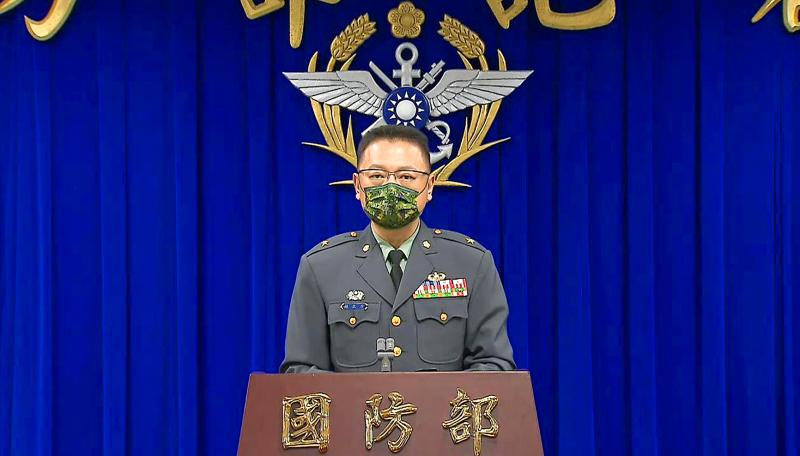
Photo: Screenshot from a Ministry of National Defense livestream
Sun said the military plans to gradually replace the aging rifles currently in use by the armed forces with the new model, but did not say when that would take place.
The Chinese-language United Daily News said a day earlier that the first batch of XT112 rifles are to enter service next year.
The military has a five-step weapon development process that includes an initial design, engineering development, initial testing and combat readiness testing before production
The military is set to purchase red-dot sights and advanced combat optical gunsight devices that can be installed on the new rifles to increase speed and accuracy in short and long-range engagements, he said.
Combat units are currently using T91 rifles produced by the 205th Armory of the Ministry of National Defense that have been in service for nearly 20 years.
The rifles are based on the T86 assault rifle, incorporating features from M16 and AR-18 rifles, but with modern features.
The nation’s reserve units use the older T65K2 rifles developed and manufactured by the Combined Logistics Command, and have been in service since the late 1970s.
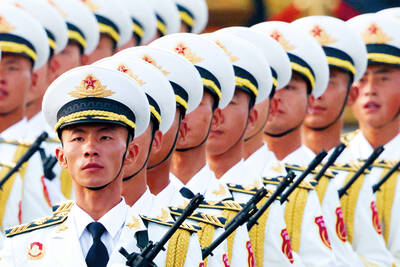
The Chinese military has built landing bridge ships designed to expand its amphibious options for a potential assault on Taiwan, but their combat effectiveness is limited due to their high vulnerability, a defense expert said in an analysis published on Monday. Shen Ming-shih (沈明室), a research fellow at the Institute for National Defense and Security Research, said that the deployment of such vessels as part of the Chinese People’s Liberation Army (PLA) Navy’s East Sea Fleet signals a strong focus on Taiwan. However, the ships are highly vulnerable to precision strikes, which means they could be destroyed before they achieve their intended
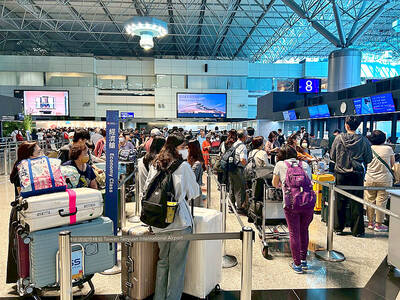
About 4.2 million tourist arrivals were recorded in the first half of this year, a 10 percent increase from the same period last year, the Tourism Administration said yesterday. The growth continues to be consistent, with the fourth quarter of this year expected to be the peak in Taiwan, the agency said, adding that it plans to promote Taiwan overseas via partnerships and major events. From January to June, 9.14 million international departures were recorded from Taiwan, an 11 percent increase from the same period last year, with 3.3 million headed for Japan, 1.52 million for China and 832,962 to South Korea,
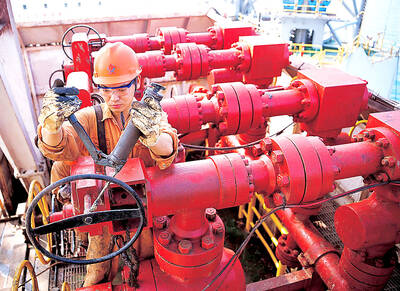
SOVEREIGNTY: The rigs show that Beijing ‘rejects Taiwan’s jurisdiction’ by building in areas where Taipei demands permission to build or alter installations Chinese oil rigs have been sighted just 26 nautical miles (42km), from Taiwan’s exclusive economic zone (EEZ) near Pratas Island (Dongsha Island, 東沙島), posing a threat to Taiwan’s sovereignty if left unchallenged, a brief published by the Jamestown Foundation on Tuesday said. Pratas Island, 444km from Kaohsiung, is northeast of the South China Sea and houses a Taiwanese garrison. The brief, titled “Rigging the Game: PRC Oil Structures Encroach on Taiwan’s Pratas Island” — referring to the People’s Republic of China — analyzed photographs and said that Beijing’s tools to pressure Taiwan now include oil rigs. “Oil rigs now constitute part of Beijing’s
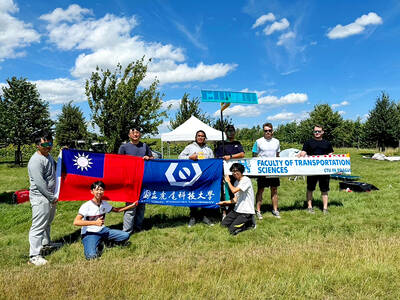
The Taiwan Experience Education Program (TEEP) has funded short-term internships in Taiwan for more than 4,500 young people from more than 40 countries since 2015, with the goal of attracting and retaining international talent, the Ministry of Education said yesterday. Fifty-five colleges launched 514 projects this year, including in fields such as semiconductors, artificial intelligence, medicine and biotechnology, green energy, and sustainability, it said. The program provides research and practical internships in Taiwan for two to six months, and offers cultural exchange and networking opportunities, the ministry said. For example, National Formosa University’s Embedded System and Autopilot Laboratory developed two solar-powered drones in